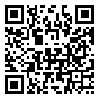Sat, Dec 13, 2025
[Archive]
Volume 35, Issue 1 (1-2021)
Med J Islam Repub Iran 2021 |
Back to browse issues page
Download citation:
BibTeX | RIS | EndNote | Medlars | ProCite | Reference Manager | RefWorks
Send citation to:



BibTeX | RIS | EndNote | Medlars | ProCite | Reference Manager | RefWorks
Send citation to:
Okhovati M, Arshadi H. COVID-19 research progress: Bibliometrics and visualization analysis. Med J Islam Repub Iran 2021; 35 (1) :132-142
URL: http://mjiri.iums.ac.ir/article-1-7044-en.html
URL: http://mjiri.iums.ac.ir/article-1-7044-en.html
Medical Library and Information Sciences Department, School of Management and Information Science, Kerman University of Medical Sciences, Kerman, Iran , h.arshadi@kmu.ac.ir
Abstract: (3699 Views)
Background: Coronavirus primarily targets the human respiratory system, COVID-19 (Coronavirus disease 2019) triggered in China in the late 2019. In March 2020, WHO announced the COVID-19 pandemic. This study aims to analyze and visualize the scientific structure of the COVID-19 publications using co-citation and co-authorship.
Methods: This is a scientometric study. Web of Science Core Collection (WoSCC) was searched for all documents regarding COVID-19, MERS-Cov, and SARS-Cov from the beginning to 2020. An Excel spreadsheet was applied to gather and analyze the data and the CiteSpace was used to visualize and analyze the data.
Results: A total of 5159 records were retrieved in WoSCC. The structure of the network indicated that the network mean silhouette was low (0.1444), implying that the network clusters’ identity is not identifiable with high confidence. The network modularity was 0.7309. The cluster analysis of the co-citation network on documents from 2003 to 2020 provided 188 clusters. The largest cluster entitled, “the Middle East respiratory syndrome coronavirus” had 255 nodes. The coauthorship network illustrated that the most prolific countries, USA, China, and Saudi Arabia, have focused on a specific field and have formed separate clusters.
Conclusion: The present study identified the important topics of research in the field of COVID-19 based on co-citation networks as well as the analysis of clusters of countries' collaborations. Despite the similarities in the production behavior in prolific countries, their thematic focus varies so that a country like China plays a role in “Quantitative Detection” cluster, while USA is the leading country in the “Biological Evaluation” cluster.
Methods: This is a scientometric study. Web of Science Core Collection (WoSCC) was searched for all documents regarding COVID-19, MERS-Cov, and SARS-Cov from the beginning to 2020. An Excel spreadsheet was applied to gather and analyze the data and the CiteSpace was used to visualize and analyze the data.
Results: A total of 5159 records were retrieved in WoSCC. The structure of the network indicated that the network mean silhouette was low (0.1444), implying that the network clusters’ identity is not identifiable with high confidence. The network modularity was 0.7309. The cluster analysis of the co-citation network on documents from 2003 to 2020 provided 188 clusters. The largest cluster entitled, “the Middle East respiratory syndrome coronavirus” had 255 nodes. The coauthorship network illustrated that the most prolific countries, USA, China, and Saudi Arabia, have focused on a specific field and have formed separate clusters.
Conclusion: The present study identified the important topics of research in the field of COVID-19 based on co-citation networks as well as the analysis of clusters of countries' collaborations. Despite the similarities in the production behavior in prolific countries, their thematic focus varies so that a country like China plays a role in “Quantitative Detection” cluster, while USA is the leading country in the “Biological Evaluation” cluster.
Keywords: Covid-19, Scientometrics, Visualization analysis, Co-citation, Collaboration network, Coauthorship, CiteSpace
Type of Study: Original Research |
Subject:
COVID 19
Send email to the article author
| Rights and permissions | |
 |
This work is licensed under a Creative Commons Attribution-NonCommercial 4.0 International License. |








